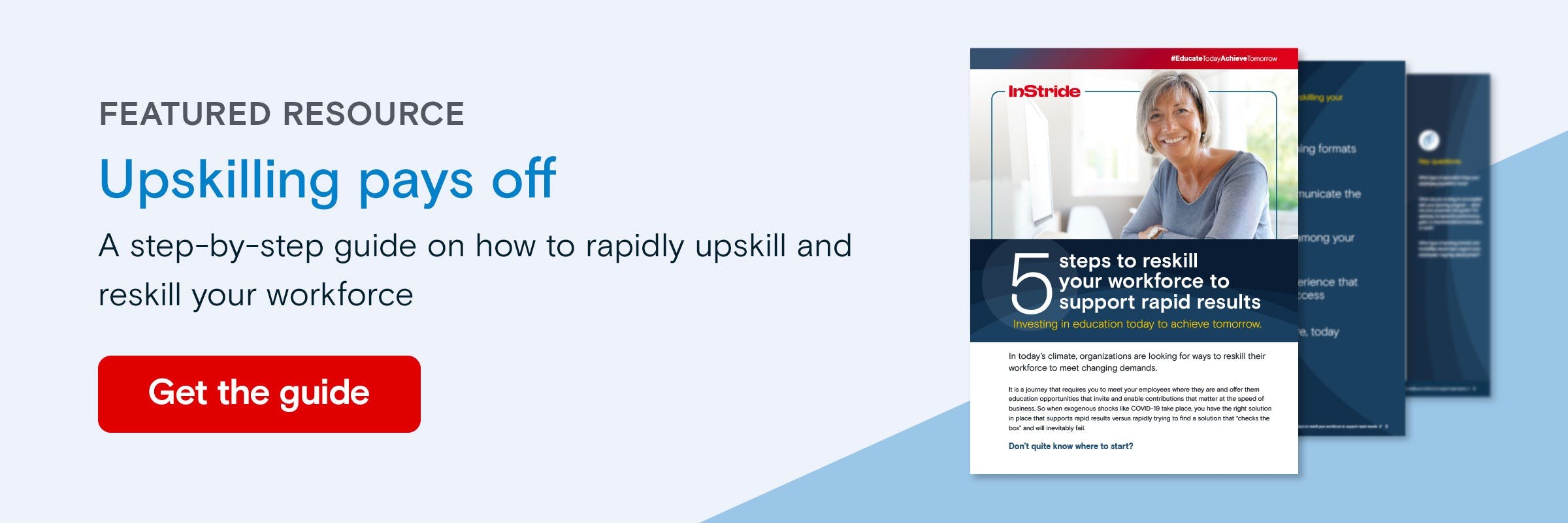In today’s ultra-competitive labor market, businesses across all industries are struggling to fill their open positions. But even before the post-pandemic job market took off, it was becoming increasingly clear that workers with relevant and contemporary skills and competencies were surprisingly difficult to find. A recent study revealed that 69 percent of companies surveyed have experienced significant difficulty while recruiting for skilled positions.
The increased need for specific and ultra-modern technological proficiency makes sourcing and acquiring external talent with the exact skill set required by your team a difficult undertaking. And talented job seekers who do have the most up-to-date training are so in demand that competition between employers is fierce.
Luckily, there’s a relatively straightforward solution: provide your current employees with ample growth opportunities and support their internal mobility.
What is internal career mobility?
Internal career mobility refers to the movement of employees into different roles within a company, whether that’s vertically into higher-level positions or horizontally into entirely new positions.
The importance of internal career mobility
Rapidly advancing technology and ever-shifting industry standards means retention and filling skills gaps are recurring problems for many businesses. And finding talent with both the exact skill set and culture-add you need can be a costly and time-consuming endeavor. That’s why many people leaders are now laser-focused on the reverse approach: internal employee development.
There’s no clear answer to the age-old question of “should we acquire or develop talent?” And although the idea of developing existing employees is not a new one, it certainly takes a back seat to external hiring for many organizations.
Now, however, it’s clear that prioritizing upskilling and reskilling for the current workforce provides a clear (and more cost-effective) path to addressing skills gaps and building an internal talent pipeline for succession. When you focus on developing existing employees, you have the ability to map out the exact skills and competencies needed to fill current and future roles.
In addition to these benefits, promoting internal career mobility also helps you attract and retain top talent. Countless studies show that access to learning and development opportunities is a key consideration for many employees and job-seekers. Millennials, who make up the majority of today’s workforce, prioritize opportunities for growth when seeking out a new employer or deciding whether to remain with their current one.
5 ways prioritizing internal mobility solves talent challenges
Internal mobility provides a number of benefits that help you to address your most pressing challenges:
- It helps to save your organization money and resources by precluding the need to spend time sourcing, interviewing, onboarding and training external applicants.
- It allows your business to strategically train and upskill current employees to address current or impending skill gaps in the workforce or to plan for future roles and business objectives.
- It cultivates a stronger company learning culture by giving your workforce significant opportunities for learning, growth and development.
- It enhances your employer brand by demonstrating to top job-seekers that you prioritize the growth and development of your employees.
- It helps you to decrease the amount in both time and money that you spend on talent acquisition by positioning your organization as an employer of choice.
Supporting internal career mobility with strategic workforce education
Now that we’ve covered why internal mobility is so critical, it’s time to talk about how you can make it a priority. There are countless learning and development (L&D) tactics that are designed to support career mobility but not all of them are able to ensure long-term success. That’s where a strategic workforce education program has the ability to deliver results — both for your business and people.
A workforce education program allows you to directly align employee career paths to business needs and map out the learning and education necessary to meet them. You’re able to plan for those hard-to-fill positions, while simultaneously supporting your employees to embrace learning, grow their skills and advance their careers. This strategic approach to workforce education is a powerful solution that promotes internal career mobility and directly supports your business objectives.
Your talent challenges become much less of a concern when you prioritize the growth and mobility of your current workforce. An investment in their education and development provides you with invaluable savings in both time and resources over the long run and enables your workforce to remain agile and ready for future disruptions.
Ready to learn how you can develop a workforce education program that drives talent results for your business? Take our 5-question assessment to get started with a set of custom resources today.


